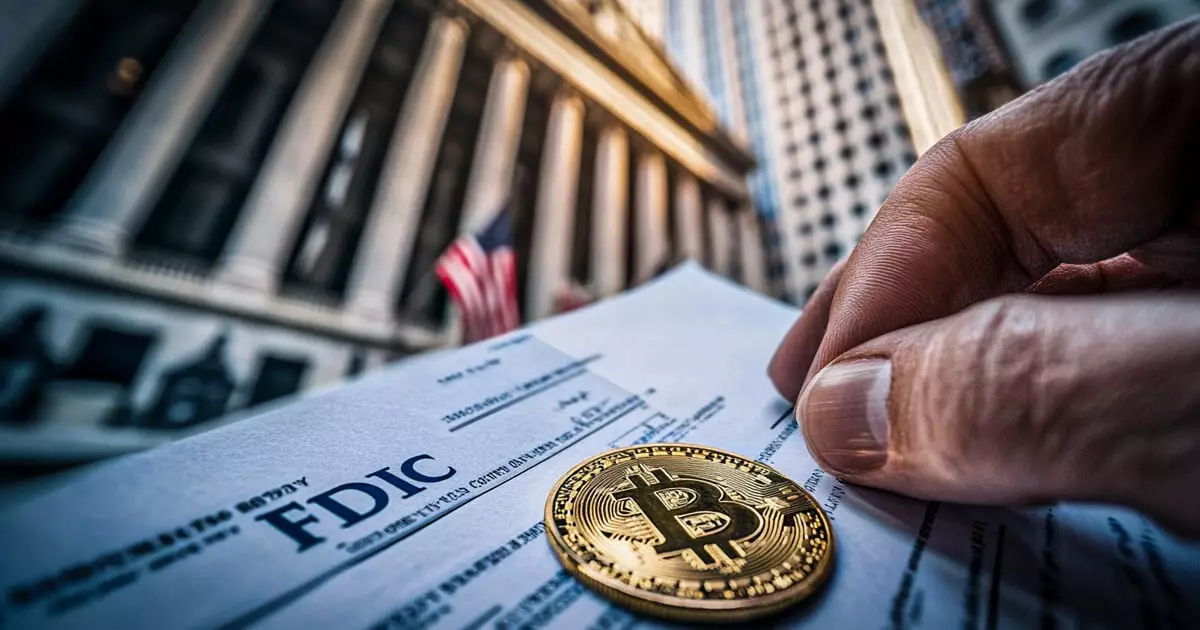The Federal Deposit Insurance Corporation (FDIC) is undergoing notable shifts in its regulatory approach towards banks involved in cryptocurrency activities. Recent reports indicate that as of February 5, the FDIC is contemplating significant changes to its guidelines, which could empower banks to engage in various crypto-related functions without the necessity of prior regulatory approval. This move may signal a substantial transformation in the relationship between traditional banking institutions and the burgeoning world of digital assets.
Historically, the FDIC has maintained a cautious position regarding cryptocurrencies, often urging banks to limit their involvement in this volatile sector. However, recent dialogues between banking institutions and government officials suggest a shift in this regulatory landscape. Banks are voicing their interest in offering crypto custody services and investigating the feasibility of tokenized deposits, which represent an innovative intersection of conventional banking and blockchain technology. This evolution could potentially offer a viable alternative to existing stablecoins and indicate a broader adaptation of the banking infrastructure to accommodate digital currencies.
On February 5, the FDIC made headlines by releasing a batch of 175 documents that elucidate its oversight practices related to banks exploring crypto services. These documents largely focused on the 2022 “pause letters” sent to 24 financial institutions, instructing them to halt or scale back their crypto-related offerings. According to FDIC acting chair Travis Hill, this release reflects a commitment to transparency, exceeding the obligations outlined by the Freedom of Information Act (FOIA).
The documents that were made public provide insights into the FDIC’s former hardline stance towards cryptocurrency integration within banking. For instance, Hill pointed out that requests from banks aiming to explore crypto services were often met with hesitation and prolonged silence from the FDIC. Many banks reportedly ceased their efforts due to the daunting nature of regulatory compliance, as it became clear that advancing crypto initiatives in this climate would pose significant challenges.
One of the most controversial aspects of this evolving narrative revolves around a FOIA request filed by Coinbase in October 2022. This request sought clarification regarding an alleged 15% deposit cap on crypto-friendly banks, an issue that raised significant concerns about the FDIC’s current practices. When the FDIC eventually complied, the initial documents were heavily redacted, raising eyebrows and leading to accusations from Coinbase’s chief legal officer, Paul Grewal, about hidden information and regulatory opacity.
Grewal’s statements, along with Hill’s assessment, illustrate a broader contention: that many banks felt compelled to abandon crypto pursuits under the weight of the FDIC’s regulatory pressures, which some critics have characterized as “regulation by exhaustion.” This tactic, which includes a cycle of requests for clarifications followed by indefinite hold times, may have systematically dissuaded banks from further involvement in the crypto space.
As the FDIC prepares to potentially lift restrictions and ease the path for banks to delve deeper into crypto activities, it opens a floodgate of opportunities. Tokenized deposits could revolutionize how banking platforms operate and pave the way for an integrated financial system that leverages blockchain technology. Still, the regulatory clarity and support from governing bodies remain essential for long-term development.
The implications of such changes are vast. With correct regulatory frameworks in place, banks may not only bolster their own operations but also provide a safer environment for consumers exploring digital asset ownership. Caitlin Long, the CEO of Custodia Bank, emphasized the importance of examining the discussions occurring within the FDIC’s internal communications, where the exclusion of cryptocurrency deposits was reflected in guidance given to regulators.
As this narrative continues to unfold, it will be crucial for stakeholders across the financial landscape—banks, consumers, and regulatory bodies alike—to maintain an open dialogue on digital asset integration. Doing so will enable collaborative approaches in crafting a suitable regulatory environment that fosters innovation while maintaining consumer protections in an era of rapid digital evolution.
A shift in regulatory perception could herald not just a new chapter for banks but also a reconfiguration of how cryptocurrency and traditional finance coexist in an increasingly digital world.















